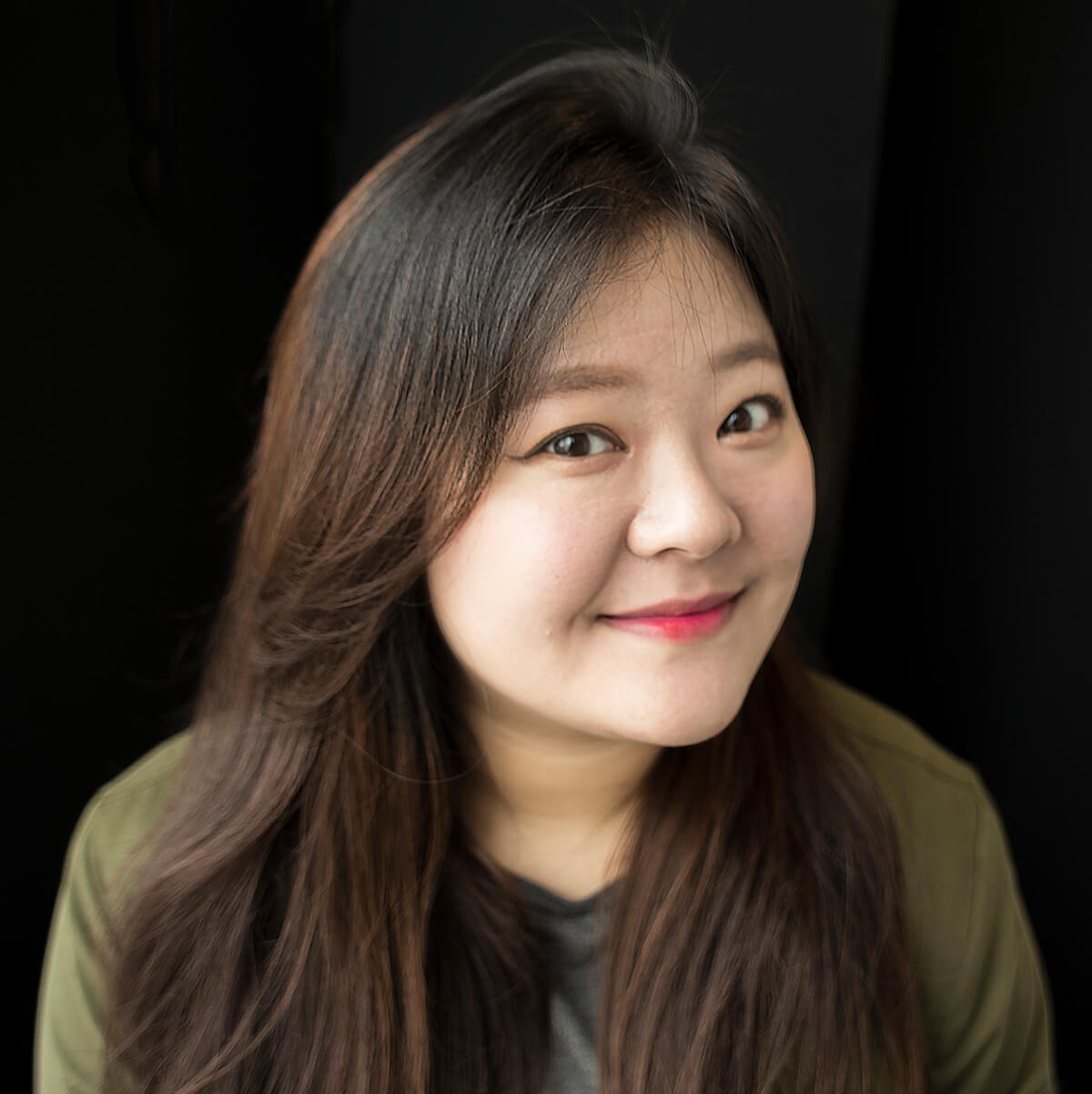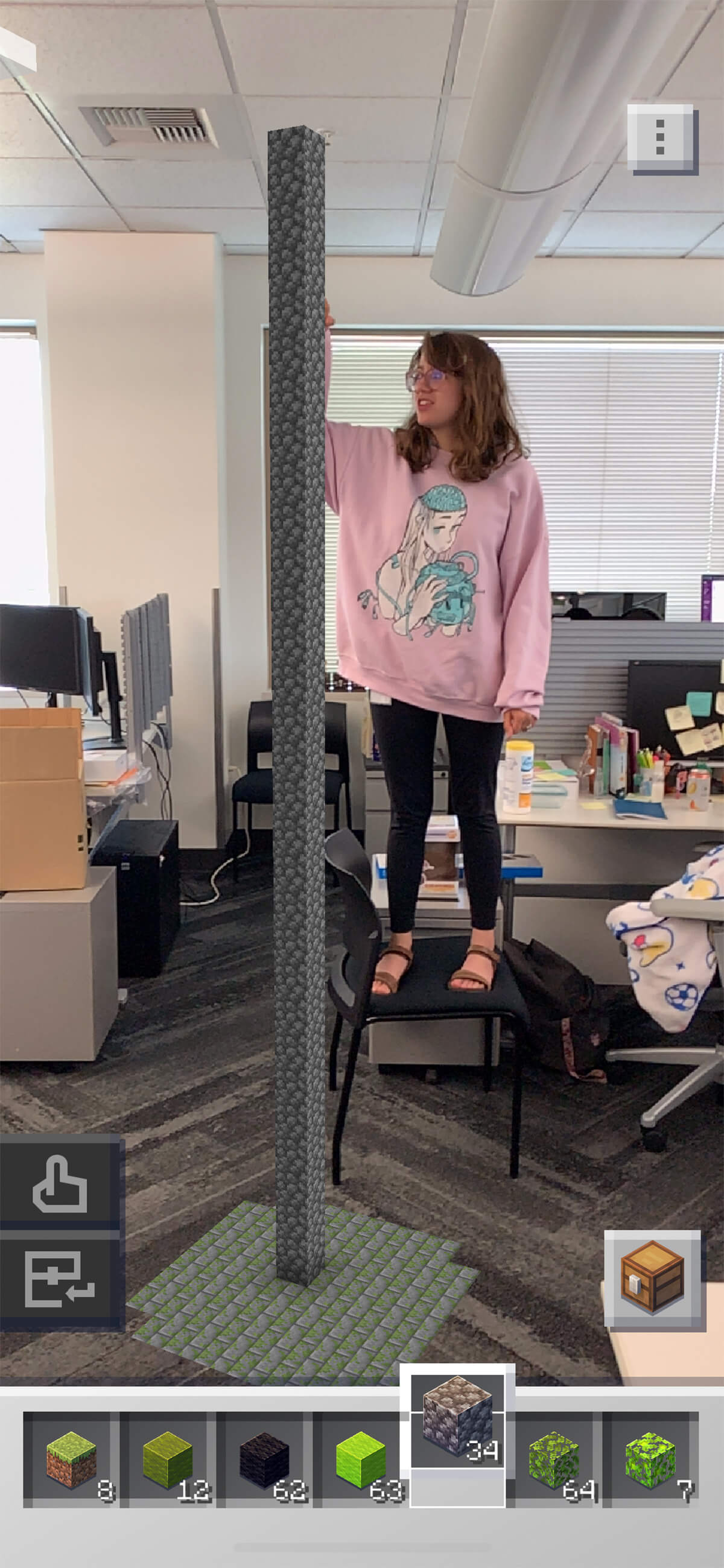When 2017 BA in Music and Sound Design graduate Shauny Jang got hired by Mojang, she didn’t know much about what she’d be working on. “They just told me, ‘This is a new Minecraft project, and it’s top secret,’” Jang says. The project was later revealed as the cutting-edge, augmented reality mobile game, Minecraft Earth, on which Jang would serve as the team’s sole audio specialist. The prospect gave Jang a moment of imposter syndrome. “It was really terrifying,” Jang says. “I was really happy and grateful to get the job, but at the same time, I kept thinking, ‘Am I qualified to do this?” But quickly, thanks to another unexpected development, those fears subsided. “I started talking to programmers, designers, and artists on the team, and so many were from DigiPen!” Jang says. “It gave me so much confidence. We just instantly clicked, and it felt so comfortable.”

Now downloaded by over 2.5 million people, Minecraft Earth is an indisputable hit — one developed at Mojang with the help of something resembling “a DigiPen game team, outside of DigiPen,” as Jang puts it. Jang and a multidisciplinary group of 10 fellow DigiPen graduates helped make the game a reality, including Alexander Kandalaft (2019), James Vanderheiden (2017), Caspian Priebe (2009), Cody Centers (2016), Garret Allen (2016), Jeffrey Kumley (2017), Stephen Scott (2010), Jake Shirley (2016), Max Orth (2019), and Kelly Greene (2019). Minecraft Earth brings Minecraft into the real world for the first time by utilizing augmented reality, letting players adventure, explore, build, and even step into their life-sized block creations.
Although the game is a new addition to the Minecraft universe and afforded some new artistic directions, the team still had to make sure to adhere to the game’s famous aesthetic. “From an outside perspective, it doesn’t feel like Minecraft would have a ton of rules as far as art guidelines go, but it really does,” Greene, a BFA in Digital Art and Animation graduate, says. “It blew my mind to see how very carefully thought out all the pixel art is, especially since you just have these 16-by-16 squares you have to stay within.” Greene joined Mojang as an artist on Minecraft Earth when the project was just getting off the ground as a prototype. She quickly found herself deeply involved in a range of areas on the project, from pre-production visual development to gameplay animation, UI art, and beyond. Getting used to the game’s singular style took some time.

“I particularly remember struggling with this animated mud block for the new Muddy Pig mob [Minecraft’s term for mobile, living creatures]. It was a lot of trial and error to get it to look right, move right, and have the right pacing,” Greene says. “In general, you kind of take all the principles of animation you learn and throw out a few for Minecraft. It was really interesting honing in on that fine balance we needed between smooth and blocky.”
Greene says her coworkers quickly helped her master the game’s specific style, the constraints of which she grew to love as she went on animating and designing many of the game’s new mobs and skins. That Muddy Pig she initially struggled with eventually became one of Minecraft Earth’s most popular new mobs, getting turned into a plush toy that sold out on the official Minecraft store. “The anecdotes I have from working on this game has made me very popular with my nephews,” Greene laughs.
Greene worked closely on the team with Jang, who also had to think deeply about the Minecraft aesthetic and its impact on music and sound design. On top of its visuals, the original Minecraft’s soothing synth soundtrack by C418 and its meme-famous sound effects have also become franchise signatures. “I had to think, what are the iconic Minecraft things that we definitely have to keep, and what new things can we do to make Minecraft Earth more modern and fun?” Jang says. Some things just required a simple update, like the game’s iconic level-up sound.
“We had a special new level-up animation with the character jumping, so the stinger needed to be more celebratory than the original game. I kept the original melody, but I added more instruments,” Jang says. Other elements, like the songs Jang wrote for Minecraft Earth, departed more deliberately from the original Minecraft blueprint. Although Mojang hadn’t planned to introduce any new music to Minecraft Earth, Jang felt a new title should have new songs, so she pitched two originals to the team — “Earth” and “Sprouting.”
“I wanted to keep some elements of C418’s original music, like using piano and some synth pads, and going for an ambient, relaxing mood,” Jang says. “But since Minecraft Earth is all about going outside and exploring, I wanted to get a more outdoorsy feeling. So I added in acoustic instruments and orchestral textures to move away from the original.” Jang’s overworld theme, “Earth,” was later remixed by game composer Mitsuhiro Katadani for the new Minecraft Fighter Pass expansion of Super Smash Bros. Ultimate, an unexpected honor that took Jang by surprise. “I thought the remix was amazing! I didn’t know that was going to happen when I was working there. It was such an incredible treat,” Jang says.
Surprisingly, the augmented reality element of the game came easy to most of the Dragons working on Minecraft Earth. Greene’s senior DigiPen game project — the VR ghost simulator How May I Haunt You? — gave her a solid background in the kind of spatial thinking AR required. Jang was initially worried AR might demand complex 3D audio spatialization techniques, but she was happy to discover it already provided “free spatialization,” just by way of being a mobile game played outdoors with friends.
Even BS in Computer Science in Real-Time Interactive Simulation graduate Max Orth says his job as a gameplay programmer wasn’t too affected by the shift to augmented reality. “It’s actually not very difficult to use AR!” Orth says. “Basically, we give the phone the images coming from the camera, and that gives us a set of planes. We just track where the planes are relative to where the camera is and use that to render what the world looks like, so when you move your phone around, things stay in the same place.” Fans of Minecraft didn’t need much priming before mastering Minecraft Earth’s new AR features either. “People got into it really quick,” Orth says. “Pretty much from the beginning we had people creating amazing Minecraft style builds with it.”
It’s really special that at DigiPen you get to experience what the actual game production process is going to be like.
Now that Minecraft Earth is out in the world, the graduates say DigiPen had a big hand in helping them make the game the success it’s become. “All the game team work I did is where I felt really prepared to go from school to the industry,” Greene says. “Besides the foundational art skills I got at DigiPen, learning how to communicate with your teammates and work cohesively with other disciplines was such a key takeaway.”
Jang echoes Greene when looking back on Minecraft Earth and her DigiPen experience. “I think it’s really special that at DigiPen you get to experience what the actual game production process is going to be like,” Jang says. “That experience really helped me. All the DigiPen people on the Minecraft Earth team knew how to work with sound designers like me, just because they’d already done it on their game teams!”